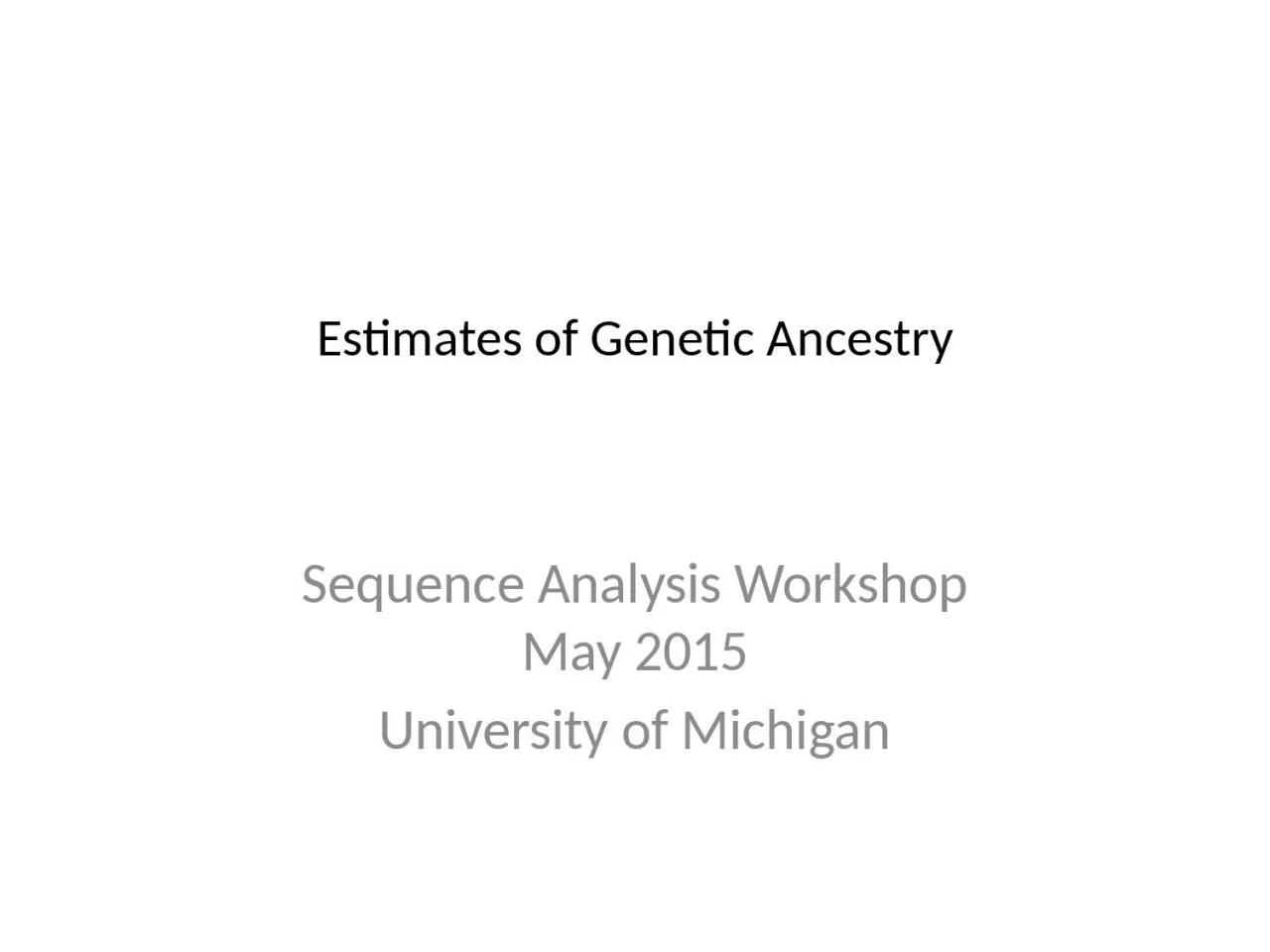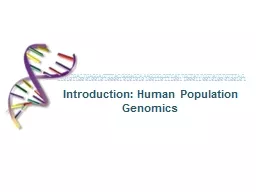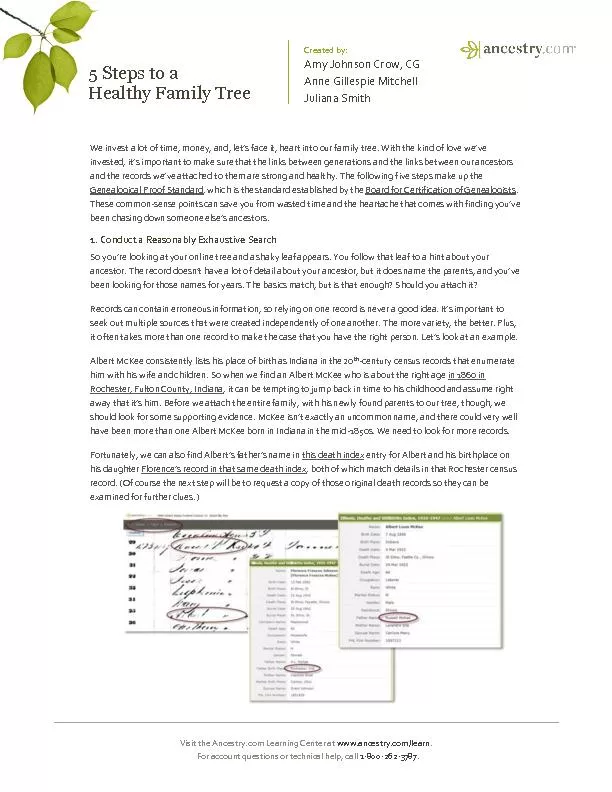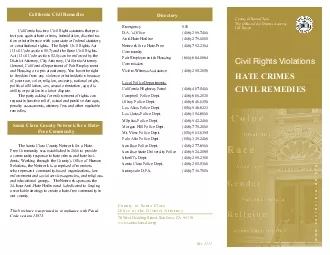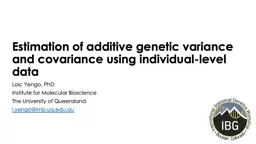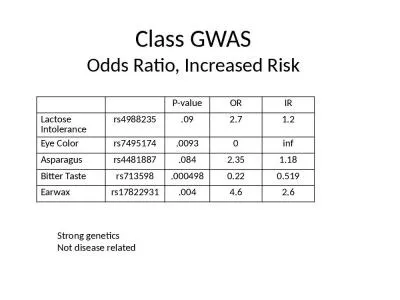PPT-Estimates of Genetic Ancestry
Author : MrRightNow | Published Date : 2022-08-04
Sequence Analysis Workshop May 2015 University of Michigan TakeHome Points Allele frequencies differ between populations These difference cause confounding Using
Presentation Embed Code
Download Presentation
Download Presentation The PPT/PDF document "Estimates of Genetic Ancestry" is the property of its rightful owner. Permission is granted to download and print the materials on this website for personal, non-commercial use only, and to display it on your personal computer provided you do not modify the materials and that you retain all copyright notices contained in the materials. By downloading content from our website, you accept the terms of this agreement.
Estimates of Genetic Ancestry: Transcript
Download Rules Of Document
"Estimates of Genetic Ancestry"The content belongs to its owner. You may download and print it for personal use, without modification, and keep all copyright notices. By downloading, you agree to these terms.
Related Documents

